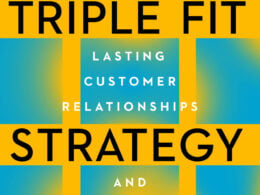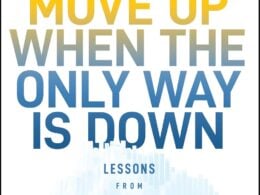The following is an excerpt on leadership from “Build the Damn Thing: How to Start a Successful Business If You’re Not a Rich White Guy” by Kathryn Finney. Copyright 2022 by Portfolio.
Don’t wait for the system to let you in—break down the door and build your damn thing. For all the Builders striving to build their businesses in a world that has overlooked and underestimated them: This is the essential guide to knowing, breaking, remaking and building your own rules of entrepreneurship in a startup and investing world designed for and by the “Entitleds.”
The 4 steps to defining your idea
1. Defining the pain point
Is your idea a problem looking for a solution or a solution looking for a problem?
A problem is something that causes a person annoyance. In the startup world, such a problem is called a “pain point.” Like the term “pain in the ass,” I’m not talking about literal pain, but more figurative pain. Is your idea a solution to someone’s pain in their ass?
Tool: Use Twitter to find out if your idea is a pain point
A quick way to find out whether your idea is truly solving a problem is to just do a quick search of Twitter. Why Twitter? Because the shorthand nature of Twitter has made it the de facto customer service hotline of the world. If you see lots of people complaining about something, you can be confident that others have this painful problem. Next, you’ll look at how big the problem is.
2. Finding the scale of the problem
Is this a problem everyone has or just me?
Maybe you have an awesome idea to solve a huge problem, but it’s only a problem for you or a few people in your circle. Finding the scale of the problem, and, in turn, the number of people who might be interested in buying your solution, is a crucial part of starting your company (we’ll dive deeper into this in the next step).
If it’s not scalable, you won’t be able to find enough customers to make a profit. This is why your early online research is crucial for determining whether you have a real shot at turning your idea into a profitable company.
In business, you either go BIG or you go broke. Using the information you gathered from your Twitter searches, try to get even more information on the scale of the problem you are planning to solve by using the Google Trends tool (https://trends.google.com) to see how many people are searching for information on terms associated with your idea. The tool, based on a scale of 0 (little data/no interest, e.g., “Kim Kordashian”) to 100 (high interest/peak popularity, e.g., “Kim Kardashian”), shows how popular a term is relative to all the other searches in a given geographic area.
So what’s a good baseline to indicate the strength of interest in your idea? I use at least three incidences of a popularity of at least 25 over the past six months on the Google Trends chart.
Sign Up: Receive the StartupNation newsletter!
3. Will people pay for your solution?
How is it currently solved, and do people pay for the solution?
There are times when the pain point and scale of the problem are clear, yet people still don’t want to pay for a potential solution. For example: public transportation in certain urban areas. Sure, having good public transit may reduce traffic and alleviate climate concerns, but in carcentric cities, people may not see the utility of the public option because they all have private means of transportation. The only way you can make money as a Builder is if you find a painful enough problem that many people are willing to pay for your solution.
The question of whether people will pay for a solution is tricky for Builders, mostly because until recently we weren’t allowed to participate in a market-based economy. The value of our businesses, our wages, even our ability to sell products were suppressed by external forces.
It’s hard to compete in the larger market when the cost of raw materials and even the valuation of property is set by society’s perception of our value based on our race. For example, homeownership is one of the primary paths to wealth creation in the United States. However, homes in America owned by Black people are often appraised at a lower valuation than homes owned by white people in the same neighborhood. The lower appraisals have resulted in an estimated $156 billion cumulative losses for Black homeowners.
What this challenge, what at Genius Guild we define as a market inefficiency (a true understatement), means to you as a Builder is that you will need to do even more research to ensure you have data to counteract any biased perceptions that might impact your ability to solve the problem. For example, while in the incubator-where-ideas-go-to-die, I spent hours at the business library in New York gathering data from industry sources on Black hair. I created a document that had every industry stat available on Black hair, which I kept with me when meeting with any potential investor.
Doing this extra research is crucial for your company’s success. You need to be prepared to rebut the Entitleds’ prejudices and fill in the gaps in their knowledge when they try to dismiss your idea (which they will).
4. Getting repeatable customers
How often will they pay for it?
Most successful startups focus on a repeatable problem, or a pain point that people need a solution to more than once. The more frequently people experience a certain pain point, the more often they will need to buy your solution and the more money you will make per customer. If you create a solution people only need for a short time, make sure you’ve found a problem they will pay a high premium for or that there are enough customers to maintain a steady flow of business. For example, take the need for breastfeeding equipment. On the individual level, solving the problem of helping mothers pump breast milk for later use is only repeatable for a relatively short time. However, there are several million babies born each year, and many women have multiple children, so the large scale of the problem offsets its limited customer repeatability.
My family’s idea for modern urban dry cleaners/laundromat wasn’t a bad idea. The laundromat business hadn’t changed in fifty years, even
though technology available to owners has changed quite a bit. New technologies like using cards instead of coins and front-loading machines that reduce water usage were increasing profit margins for laundromat owners. While technically having clean clothing isn’t a “need” like water or food, it’s definitely pretty basic on Maslow’s pyramid. At some point, everyone has to clean their clothing (scale) and at a fairly weekly or biweekly frequency (repeatable customer). Some can purchase a washer and dryer, but it might not be possible structurally if you live in an apartment (pain point). Or maybe you just hate doing laundry like most of us do (scale). There are around 29,500 laundromats in the United States, and these small businesses contribute nearly $5 billion to the U.S. economy.
“Build the Damn Thing: How to Start a Successful Business If You’re Not a Rich White Guy” can be purchased via StartupNation.com below.






